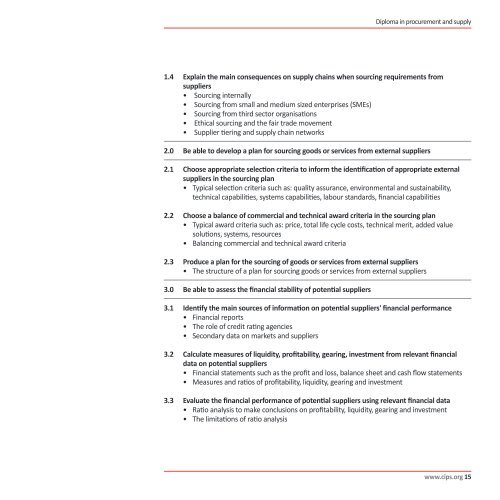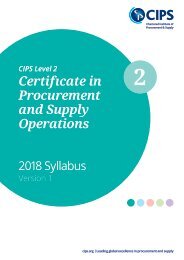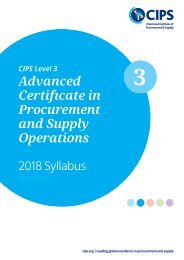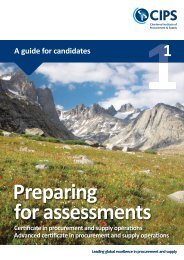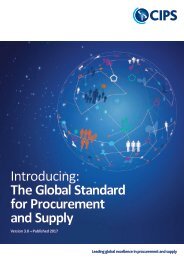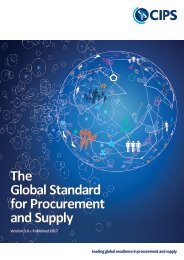CIPS_DipProcSupp_L4_UCG_24pp_210sq_0517_WEB
You also want an ePaper? Increase the reach of your titles
YUMPU automatically turns print PDFs into web optimized ePapers that Google loves.
Diploma in procurement and supply<br />
1.4 Explain the main consequences on supply chains when sourcing requirements from<br />
suppliers<br />
• Sourcing internally<br />
• Sourcing from small and medium sized enterprises (SMEs)<br />
• Sourcing from third sector organisations<br />
• Ethical sourcing and the fair trade movement<br />
• Supplier tiering and supply chain networks<br />
2.0 Be able to develop a plan for sourcing goods or services from external suppliers<br />
2.1 Choose appropriate selection criteria to inform the identification of appropriate external<br />
suppliers in the sourcing plan<br />
• Typical selection criteria such as: quality assurance, environmental and sustainability,<br />
technical capabilities, systems capabilities, labour standards, financial capabilities<br />
2.2 Choose a balance of commercial and technical award criteria in the sourcing plan<br />
• Typical award criteria such as: price, total life cycle costs, technical merit, added value<br />
solutions, systems, resources<br />
• Balancing commercial and technical award criteria<br />
2.3 Produce a plan for the sourcing of goods or services from external suppliers<br />
• The structure of a plan for sourcing goods or services from external suppliers<br />
3.0 Be able to assess the financial stability of potential suppliers<br />
3.1 Identify the main sources of information on potential suppliers' financial performance<br />
• Financial reports<br />
• The role of credit rating agencies<br />
• Secondary data on markets and suppliers<br />
3.2 Calculate measures of liquidity, profitability, gearing, investment from relevant financial<br />
data on potential suppliers<br />
• Financial statements such as the profit and loss, balance sheet and cash flow statements<br />
• Measures and ratios of profitability, liquidity, gearing and investment<br />
3.3 Evaluate the financial performance of potential suppliers using relevant financial data<br />
• Ratio analysis to make conclusions on profitability, liquidity, gearing and investment<br />
• The limitations of ratio analysis<br />
www.cips.org 15


